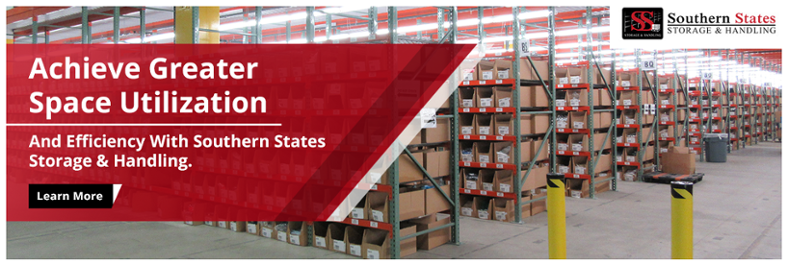Getting the most out of your warehouse storage space is a constant challenge. There are many factors that warehouse managers have to balance when choosing and setting up their warehouse racking systems, including:
- Total storage capacity;
- Ease of loading/unloading; and
- Storage layout/customization options.
A higher-capacity racking system makes it easier for a warehouse to carry lots of products, but if the pallets aren’t easy to get off of the shelf and organize, then forklift operators will have to waste large amounts of time and energy retrieving products—reducing productivity and minimizing the cost-to-benefit ratio of the racking system.
Choosing the right kind of warehouse racking system is important for making the most out of the warehouse’s available space while improving efficiency for warehouse operations. But, which kind of racking system is the best for your warehouse? One popular type of warehouse racking system is the push back racking system.
What is a push back racking system, and what are its benefits?
What Push Back Racking Systems Are
Push back racking systems are a type of storage system intended to be used with pallets while creating a higher storage density than most other racking systems. A typical push back racking system can store between two and five pallets in a single lane—though there are some that support higher capacities than this.
Each shelf of the racking system has rails that are angled slightly towards the aisle, with a series of carts sitting atop the rails. These nested carts are pushed back each time a new pallet is loaded onto the rack (hence the name, “push back” racking).
When pallets are removed, the angled rails let the carts slide forward, presenting the next pallet in line for easy retrieval.
Push Back Racking System Benefits
Some key advantages of a push back racking system over other warehouse storage solutions include:
- Ease of Pallet Retrieval. Because the rails are angled toward the aisle, the carts will slide forward naturally each time a pallet is removed. This places each pallet close to the front of the racking system as it is unloaded, making retrieval of every pallet in a row easy.
- High Storage Density. Because the pallets will flow naturally to the front of the rack, push back racking systems can be made much deeper than many other racking systems. This helps to improve the storage density of a warehouse so there is more product stored with less space needed for extra aisles. For example, say you had a push back racking system that was three racks high, three pallets across, and five pallets deep. Then you have another racking system that is only two pallets deep. Say each aisle has to be 10 feet wide at a minimum for your forklifts to safely operate, with the push back racking system being 25.2 feet deep, and the other racking system being 10 feet deep. One aisle of push back racks would take a total of 60.4 feet (to put shelving at either side) and hold 90 pallets per section of racks (45 in a single racking system, with one set of racks on either side of the aisle). Two aisles of the other racking would take 60 feet of space as well, but only hold 72 pallets—18 pallets per racking system, two systems per aisle, and two aisles (18 x 2 x 2 = 72). That would be an approximate 20% drop in pallets stored for the same amount of space.
- Faster Sorting of Goods. Adding more aisles to your warehouse does more than just waste space—it also makes the storage and retrieval of pallets take longer. More aisle means more time spent looking for where something goes, particularly for newer employees who have yet to memorize the warehouse’s layout. By using fewer aisles with deeper storage, push back racking helps minimize this productivity hurdle. Also, having fewer total slots with more storage makes it somewhat easier to change the planogram for your warehouse layout when new products are added.
Overall, push back racking systems provide an excellent balance of selectivity and density—better than drive in racking, even.
However, care should be taken when using push back racking systems for perishable goods storage. The pallet in the back of the row cannot be accessed until every other pallet is pulled out first—which is necessary when rotating product to distribute the oldest products first to avoid allowing product to spoil on the rack. For such applications, pallet flow racking or carton flow racking systems that feed product from the rear end of the rack to be dispensed through the front are preferable because they enable first-in, first-out loading/unloading.
Also, with push back racking, racking system maintenance can be a bit more intensive than a racking system that does not have moving parts. The carts need to be routinely inspected to verify that they can move back and forth with ease.
Many warehouses add pallet rack guard net systems to these kinds of racks because they are slanted—doing this helps to prevent items loaded onto a pallet from falling onto employees.
Need help finding the perfect warehouse storage solution for your needs? Contact the experts at Southern States Storage & Handling to learn more today!






